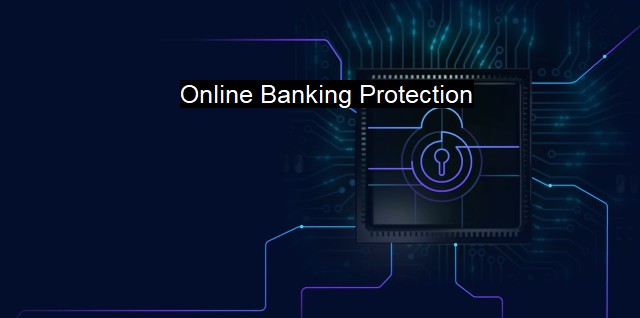What is Online Banking Protection?
Securing Your Online Banking: Importance, Risks, and Protection Measures with Antivirus Software
Online banking protection refers to measures and tools designed to provide a secure online banking environment to the users, preventing unauthorized access, theft, or other malicious actions targeted at sensitive financial information. In today's heightened digital age, the need for robust and efficient protection for online banking cannot be overstated. Financial institutions continually face cyber threats, such as phishing, identity theft, malware, and DDoS attacks that make online banking a dangerous platform for customers without proper protection mechanisms in place. Therefore, online banking protection plays a critical role making online financial transactions, loans, credit card managements safer for everyone, ensuring only authorized parties have access.Online banking protection involves multiple layers of security solutions, all collaborating to shield user information from cyber threats. The frontline of this protection comprises encryption technology that encrypts the data exchanged between the user's device and the financial institution's servers. Encryption is a simple yet effective method to prevent hackers from reading or modifying sensitive data even if they manage to gain access to it during its transmission.
One of the common threats to online banking users is phishing, whereby attackers trick users into providing their login details and other personal information. Banking protection will incorporate anti-phishing solutions that alert the users when they navigate to a suspicious or dangerous website. Banks further utilize secure sockets layer (SSL) certificates to boost trust and remain credible in the user's eyes. It represents the establishment's promise to safeguard user data, ensuring consumers that the website they are visiting is genuine.
Malware is another leading threat facing the banking industry. Malware attacks aim to steal critical financial data, which can then be used for fraudulent activities. Strong antivirus software and filters designed to detect and eliminate malware are essential components of online banking protection. Additional security features include two-factor authentication (2FA), prompting users to provide additional proof of identity beyond the usual password, which can add another layer of security.
Another vital aspect of online banking protection is a firewall. A firewall works as a barrier between the bank's network and potential online threats, blocking unauthorized access attempts while letting acceptable traffic through. Some financial institutions also use intrusion detection systems (IDS) and intrusion prevention systems (IPS) that can detect or prevent malicious activities promptly.
Online banking protection incorporates a large range of tools and techniques to ensure comprehensive security coverage. Regular updates are integral to maintain the robustness of the security layers as new technologies and breach methods continually emerge. By leveraging machine learning and artificial intelligence, banking systems can further identify patterns and timely detect unusual behaviours or transaction patterns, marking them for review, thus preventing potential frauds effectively.
Banks are also aware that user error can lead to security breaches; hence, they have implemented security education programs for customers. One of the best defenses against cyber threats is educated users who understand the risks and safe online behavior. Training users to recognize potential scams or threats and how to react can significantly reduce successful cyber threats.
Online banking protection ensures millions of users can conduct financial transactions in a secure environment, safeguarding them against the range of cyber threats present online. Through a combination of strong, updated technology such as encryption tools and antivirus software, and detailed user education programs, banks can effectively protect their users. This proactive commitment works towards maintaining the trust of customers in their financial institution's ability to guard their financial transactions and sensitive data securely. Despite the constantly evolving landscape of cyber threats, these comprehensive online banking protection measures continually adapt and improve to provide robust safeguarding mechanisms for both the financial institution and its customers.

Online Banking Protection FAQs
What is online banking protection and why is it important?
Online banking protection refers to the measures and practices that are put in place to secure online banking transactions and information from cybercriminals. It is important because online banking is becoming increasingly popular, and without proper protection, users are at risk of losing their money and sensitive information to hackers.What are some common online banking protection measures that users can take?
Some common online banking protection measures that users can take include using strong passwords, two-factor authentication, and regularly updating antivirus software. It is also important to avoid using public Wi-Fi when accessing online banking sites and to be cautious of phishing scams.What are some signs that suggest a user's online banking account may have been compromised?
Some signs that suggest a user's online banking account may have been compromised include unauthorized transactions, changes in login credentials, and suspicious emails or texts requesting personal information. If a user notices any of these signs, they should contact their bank immediately and change their passwords.How can antivirus software help with online banking protection?
Antivirus software can help with online banking protection by detecting and blocking malicious software that can steal sensitive information or compromise a user's system. It can also alert users of potential threats and provide tools to remove any detected threats. However, it's important to keep antivirus software up to date to ensure maximum protection.| | A | | | B | | | C | | | D | | | E | | | F | | | G | | | H | | | I | | | J | | | K | | | L | | | M | |
| | N | | | O | | | P | | | Q | | | R | | | S | | | T | | | U | | | V | | | W | | | X | | | Y | | | Z | |
| | 1 | | | 2 | | | 3 | | | 4 | | | 7 | | | 8 | | |||||||